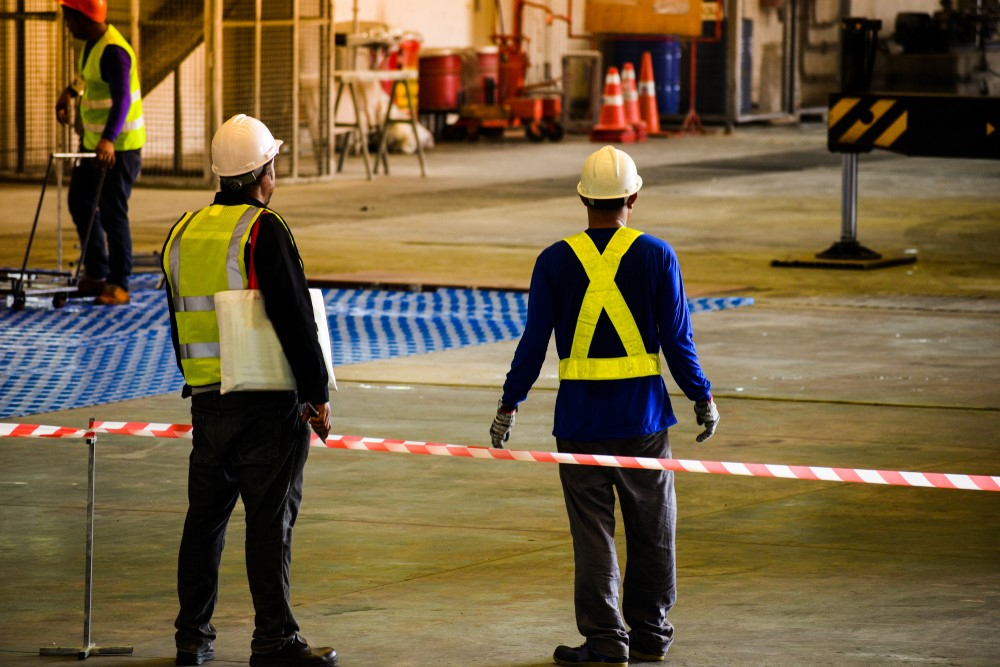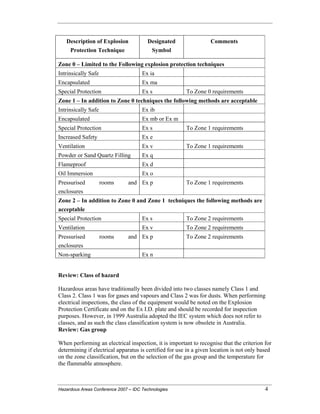Some Ideas on Roar Solutions You Need To Know
Wiki Article
The Best Strategy To Use For Roar Solutions
Table of ContentsThe Roar Solutions PDFsRoar Solutions - TruthsSome Known Questions About Roar Solutions.
In order to secure setups from a prospective explosion a method of evaluating and classifying a possibly harmful area is called for. The function of this is to make sure the correct option and setup of equipment to inevitably avoid an explosion and to ensure safety and security of life.
(https://www.interweave.com/plus_old/members/roarsolutions/profile/)
No tools should be mounted where the surface temperature of the equipment is higher than the ignition temperature of the given risk. Below are some usual dirt hazardous and their minimum ignition temperature. Coal Dust 380C 225C Polythene 420C (melts) Methyl Cellulose 420C 320C Starch 460C 435C Flour 490C 340C Sugar 490C 460C Grain Dust 510C 300C Phenolic Material 530C > 450C Aluminium 590C > 450C PVC 700C > 450C Soot 810C 570C The probability of the threat being existing in a focus high adequate to cause an ignition will certainly vary from area to location.
Dangerous area electrical tools possibly designed for usage in greater ambient temperatures. Field Repair By Authorised Personnel: Complex testing may not be required nevertheless certain procedures may need to be adhered to in order for the equipment to maintain its third party rating. Each item of tools with a hazardous ranking should be assessed independently.
Roar Solutions Fundamentals Explained
The tools register is a detailed database of equipment documents that includes a minimum collection of fields to identify each product's location, technological specifications, Ex-spouse category, age, and environmental information. This information is crucial for monitoring and managing the tools successfully within dangerous locations. On the other hand, for routine or RBI sampling examinations, the grade will be a mix of Detailed and Close assessments. The ratio of Thorough to Close assessments will be established by the Equipment Danger, which is assessed based upon ignition threat (the possibility of a resource of ignition versus the chance of a flammable ambience )and the dangerous area classification( Area 0, 1, or 2). This variation will additionally influence the resourcing needs for job prep work. As soon as Lots are defined, you can create sampling plans based on the example dimension of each Whole lot, which describes the number of arbitrary tools items to be examined. To establish the called for sample size, 2 facets require to be assessed: the dimension of the Whole lot and the group of assessment, which shows the degree of initiative that should be applied( decreased, typical, or raised )to the inspection of the Lot. By combining the classification of assessment with the Whole lot dimension, you can after that develop the ideal denial requirements for a sample, indicating the permitted variety of malfunctioning products found within that sample. For more information on this process, please refer to the Power Institute Standards. The IEC 60079 common recommends that the maximum interval between evaluations ought to not exceed three years. EEHA evaluations will also be carried out outside of RBI campaigns as component of scheduled maintenance and tools overhauls or repairs. These assessments can be attributed towards the RBI sample sizes within the impacted Lots. EEHA examinations are performed to determine faults in electrical tools. A weighted racking up system is important, as a single item of devices may have multiple mistakes, each with varying degrees of ignition threat. If the consolidated rating of both examinations is much less than twice the fault rating, the Whole lot is deemed appropriate. If the Whole lot is still considered unacceptable, it has to go through a full examination or validation, which may trigger stricter inspection methods. Accepted Great deal: The reasons for any type of faults are determined. If an usual failure mode is discovered, added devices might need examination and repair service. Faults are identified by seriousness( Safety, Honesty, Housekeeping ), making sure that urgent concerns are assessed and attended to promptly to alleviate any effect on safety or operations. The EEHA data source should track and tape the lifecycle of mistakes along with the corrective activities taken. Implementing a robust Risk-Based Assessment( RBI )strategy is critical for making certain compliance and security in managing Electrical Tools in Hazardous Locations( EEHA) (Roar Solutions). Automated Fault Rating and Lifecycle Monitoring: Easily manage faults and track their lifecycle to enhance evaluation accuracy. The intro of this assistance for risk-based assessment additionally enhances Inspectivity's setting as a best-in-class option for governing compliance, as well as for any asset-centric assessment usage situation. If you want finding out more, we welcome you to ask for a demo and uncover just how our option can change your EEHA monitoring procedures.
The Single Strategy To Use For Roar Solutions

In terms of eruptive danger, a harmful area is an environment in which an eruptive atmosphere exists (or might be expected to be present) in amounts that need special safety measures for the building, installation and usage of devices. hazardous area course. In this post we explore the challenges encountered in the work environment, the risk control actions, and index the required competencies to work safely
It issues of contemporary life that we make, save or handle a series of gases or liquids that are regarded flammable, and a variety of dusts that are regarded combustible. These materials can, in certain problems, form eruptive atmospheres and these can have significant and awful effects. A lot of us know with the fire triangle get rid of any kind of among the three components and the fire can not occur, yet what does this mean in the context of harmful locations? When damaging this down into its simplest terms it is basically: a mix of a specific amount of release or leakage of a certain compound or product, blending with ambient oxygen, and the presence of a source of ignition.
In the majority of instances, we can do little about the levels of oxygen in the air, however we can have considerable influence on resources of ignition, for instance electric tools. Hazardous areas are documented on the hazardous area category drawing and are determined on-site by the triangular "EX LOVER" sign. Here, amongst various other essential info, zones are split right into 3 kinds relying on the hazard, the chance and period that an eruptive atmosphere will exist; Zone 0 or 20 is deemed the most dangerous and Zone 2 or 22 is deemed the least.
Report this wiki page